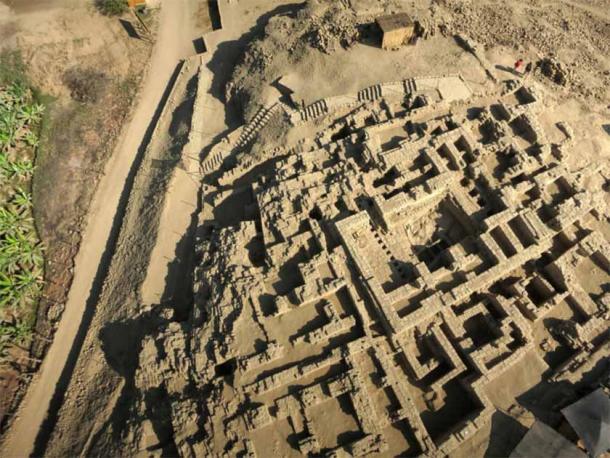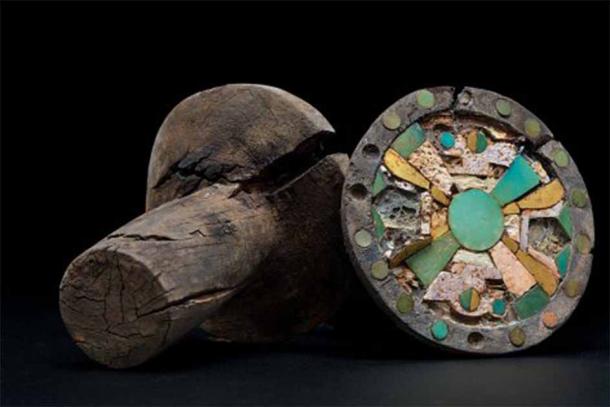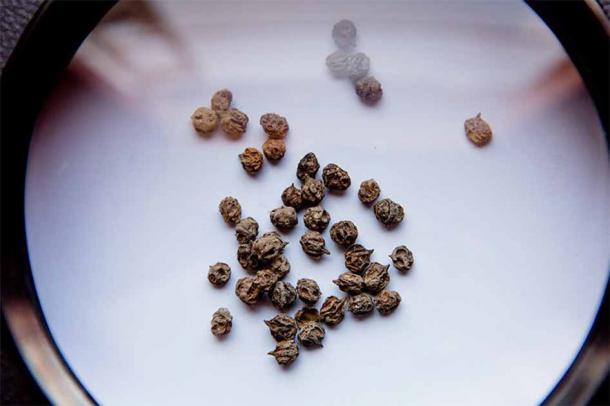
Elite Wari Craftsman With Jewels And Rare Tools Found at Peruvian Site
The intact 1,300-year-old tomb of an elite Wari craftsman tomb was recently discovered at Peru’s well-known Huarmey Castle archaeological complex. It’s “unique” because it belonged to a craftsman, and alongside the usual gold and silver the burial contained rare Wari bronze trade tools.
The Elite Wari Craftsman: An “Incredible and Important” Find
Between 600-1000 AD the central and southern Andean highlands supported two cultures named after their respective imperial capital cities. The Tiahuanaco (Tiwanaku) culture was centered around the edge of Lake Titicaca in what is now northwestern Bolivia, while the Huari (Wari) cultures revolved around the modern city of Ayacucho in present-day Peru.
- Study of Ceramics Provides New Thinking on Origins of First Peruvian Empire
- Skeletal Studies Indicate Ancient Peruvians Resided Permanently at 12,500 Feet
Polish archaeologists recently discovered a one-thousand-year-old tomb of an elite Wari craftsman, which they say is telling us lots more about the artisans of ancient Peru. According to Peruvian media, the discoverers are calling this tomb and its contents "incredible and important" because it held the remains of a craftsman who is now known as "Lord of Huarmey." Not only was this Wari elite buried with gold and silver jewels, but also with the tools of his trade.

An aerial view of the ancient Wari culture citadel of El Castillo (castle) de Huarmey, where a Polish archaeological team have recently found the grave of an elite Wari craftsman along with rare grave goods. (Milosz Giersz / Faculty of Archeology, University of Warsaw)
Digging Deep Into The Wari Culture
The tomb was found at the pyramid-like El Castillo de Huarmey, or "the Castle on the River Huarmey." This archaeological site is located on the Peruvian Pacific coast in the Ancash Region, about 290 kilometers (180 miles) north of Lima in the suburbs of the town of Huarmey. The discovery team was led by archaeologist Milosz Giersz, a professor at the University of Warsaw, who told DW the tomb belongs to “an elite Wari craftsman who was buried with gold and silver trousseaus."
The Huarmey castle archaeological site is renowned for its Wari mausoleum. In 2021, a team of Polish and Peruvian archaeologists dug 6 meters (19.68 feet) into this burial complex and found the 1,300-year-old tomb which evidence revealed had belonged to a craftsman man, the so-called Lord of Huarmey.
His role in life was identified by the trade tools discovered in his grave which included “axes, knives and baskets.” And his elite status was reaffirmed with the inclusion of “turquoise, gold and silver earmuffs, fine wooden figures and a magnificent gold jewel constructed with semiprecious stones.”

Dr. Milosz Giersz’s Polish team found these Wari earrings or earmuffs at the Huarmey site, where the grave of the elite Wari craftsman was recently uncovered. (Archaeology of Peru)
Artifacts Rarely Seen In the World
Dr. Giersz explained that Huarmey Castle is a series of multi-story funerary towers on top of a rocky spur. And he added that this ancient necropolis was where “the highest Wari imperial elite ancestors were worshipped." This means groups of people gathered and got stoned out of their minds on bizarre jungle juices, which was closely associated with ancient ancestor worship.
According to a paper published in the journal Antiquity, visitors to another 1,200-year-old Wari town known today as Quilcapampa were given “psychoactive substances by the elites to make people loyal.” Archaeologists identified 16 vilca seeds which can be made into a powerful psychoactive hallucinogenic substance. Being heavily and inescapably stoned, Wari people would have interpreted this as “a spiritual experience.”
Study co-author Matthew Biwer, a visiting assistant professor of anthropology and archaeology at Dickinson College, Pennsylvania, said the shared psychotropic experience “helped the elite win over the loyalty of members of the community. It was an important part of creating social bonds between Wari hosts and local guests.”

Samples of Schinus mole discovered at Quilcapampa in Peru, which were used by Wari culture people to make an alcoholic drink. (Lisa Milosavljevic & Royal Ontario Museum / Antiquity Publications Ltd)
Not Power For The People, But Power Over The People.
Drug use and ancestor worship were religious practices based on community wide beliefs that deceased family members can offer divine protection to the worshipping community. The ancestor spirits were thought to protect from droughts, floods, disease, but what their worship really achieved was to solidify elite power and social control over expanding Wari populations.
- Wari Culture Used Alcohol and Drugs to Maintain Political Control
- Huarmey Queen: Lifestyles of the Rich and Famous in Ancient Peru
Long before the rise of the Inca empire, Wari leaders would unify and systemize local textile production, animal rearing and artifact production. And to assure all the profits worked their way to the top, ancestor worship, as was carried out at Huarmey Castle, cemented loyalty to the elite landowning families across the Wari Empire.
The recently discovered elite Wari craftsman not only belonged to the Wari ruling class, but he helped build the empire with his own two highly-skilled hands.
Top image: At the Castle of Huarmey in Peru, Polish archaeologists, led by Dr. Milosz Giersz, have found the pre-Hispanic grave of an elite Wari craftsman with rare grave goods, including jewels and tools (photographs of these have not be released yet). Advanced metal artifacts like those in this main image have already been found by Giersz’s team at Huarmey. Source: Milosz Giersz / Faculty of Archeology, University of Warsaw
By Ashley Cowie
















Comments
So, this man, ‘elite craftsman’ as you call him, of the Wari people, who prior to this discovery were NOT known for any metal-working capabilities, but this one man somehow learned the trade all by himself? Hmmm, just trying to imagine how he alone figured it all out, crafted the stuff, and thought to keep it a secret from the others.
Or maybe, just maybe, his bones and creations were lying down there for thousands of years, unbeknownst to the Wari people living above, primitively, in the ancient ruins of a long, lost prehistoric culture?
Nobody gets paid to tell the truth.